Hyeoncheol Kim
Pedagogy-R1: Pedagogically-Aligned Reasoning Model with Balanced Educational Benchmark
May 24, 2025Abstract:Recent advances in large reasoning models (LRMs) show strong performance in structured domains such as mathematics and programming; however, they often lack pedagogical coherence and realistic teaching behaviors. To bridge this gap, we introduce Pedagogy-R1, a framework that adapts LRMs for classroom use through three innovations: (1) a distillation-based pipeline that filters and refines model outputs for instruction-tuning, (2) the Well-balanced Educational Benchmark (WBEB), which evaluates performance across subject knowledge, pedagogical knowledge, tracing, essay scoring, and teacher decision-making, and (3) a Chain-of-Pedagogy (CoP) prompting strategy for generating and eliciting teacher-style reasoning. Our mixed-method evaluation combines quantitative metrics with qualitative analysis, providing the first systematic assessment of LRMs' pedagogical strengths and limitations.
Counterfactual Fairness Evaluation of Machine Learning Models on Educational Datasets
Apr 15, 2025Abstract:As machine learning models are increasingly used in educational settings, from detecting at-risk students to predicting student performance, algorithmic bias and its potential impacts on students raise critical concerns about algorithmic fairness. Although group fairness is widely explored in education, works on individual fairness in a causal context are understudied, especially on counterfactual fairness. This paper explores the notion of counterfactual fairness for educational data by conducting counterfactual fairness analysis of machine learning models on benchmark educational datasets. We demonstrate that counterfactual fairness provides meaningful insight into the causality of sensitive attributes and causal-based individual fairness in education.
From Prediction to Application: Language Model-based Code Knowledge Tracing with Domain Adaptive Pre-Training and Automatic Feedback System with Pedagogical Prompting for Comprehensive Programming Education
Aug 31, 2024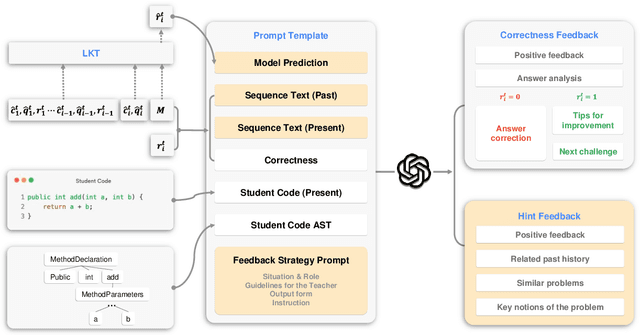

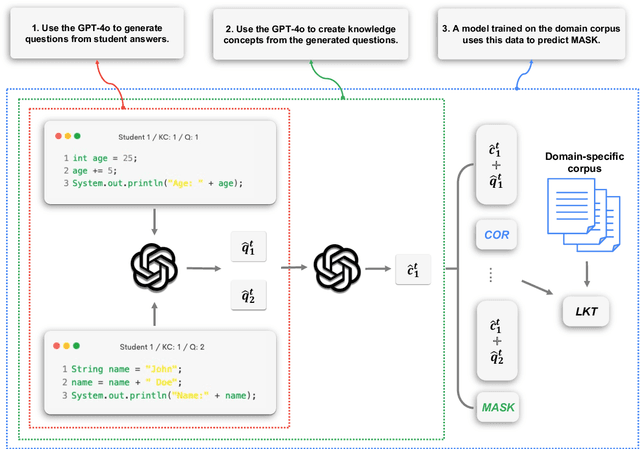

Abstract:Knowledge Tracing (KT) is a critical component in online learning, but traditional approaches face limitations in interpretability and cross-domain adaptability. This paper introduces Language Model-based Code Knowledge Tracing (CodeLKT), an innovative application of Language model-based Knowledge Tracing (LKT) to programming education. CodeLKT leverages pre-trained language models to process learning data, demonstrating superior performance over existing KT and Code KT models. We explore Domain Adaptive Pre-Training (DAPT) and Task Adaptive Pre-Training (TAPT), showing enhanced performance in the coding domain and investigating cross-domain transfer between mathematics and coding. Additionally, we present an theoretically-informed integrated system combining CodeLKT with large language models to generate personalized, in-depth feedback to support students' programming learning. This work advances the field of Code Knowledge Tracing by expanding the knowledge base with language model-based approach and offering practical implications for programming education through data-informed feedback.
Language Model Can Do Knowledge Tracing: Simple but Effective Method to Integrate Language Model and Knowledge Tracing Task
Jun 05, 2024Abstract:Knowledge Tracing (KT) is a critical task in online learning for modeling student knowledge over time. Despite the success of deep learning-based KT models, which rely on sequences of numbers as data, most existing approaches fail to leverage the rich semantic information in the text of questions and concepts. This paper proposes Language model-based Knowledge Tracing (LKT), a novel framework that integrates pre-trained language models (PLMs) with KT methods. By leveraging the power of language models to capture semantic representations, LKT effectively incorporates textual information and significantly outperforms previous KT models on large benchmark datasets. Moreover, we demonstrate that LKT can effectively address the cold-start problem in KT by leveraging the semantic knowledge captured by PLMs. Interpretability of LKT is enhanced compared to traditional KT models due to its use of text-rich data. We conducted the local interpretable model-agnostic explanation technique and analysis of attention scores to interpret the model performance further. Our work highlights the potential of integrating PLMs with KT and paves the way for future research in KT domain.
LLaVA-Docent: Instruction Tuning with Multimodal Large Language Model to Support Art Appreciation Education
Feb 09, 2024



Abstract:Art appreciation is vital in nurturing critical thinking and emotional intelligence among learners. However, traditional art appreciation education has often been hindered by limited access to art resources, especially for disadvantaged students, and an imbalanced emphasis on STEM subjects in mainstream education. In response to these challenges, recent technological advancements have paved the way for innovative solutions. This study explores the application of multi-modal large language models (MLLMs) in art appreciation education, focusing on developing LLaVA-Docent, a model that leverages these advancements. Our approach involved a comprehensive literature review and consultations with experts in the field, leading to developing a robust data framework. Utilizing this framework, we generated a virtual dialogue dataset that was leveraged by GPT-4. This dataset was instrumental in training the MLLM, named LLaVA-Docent. Six researchers conducted quantitative and qualitative evaluations of LLaVA-Docent to assess its effectiveness, benchmarking it against the GPT-4 model in a few-shot setting. The evaluation process revealed distinct strengths and weaknesses of the LLaVA-Docent model. Our findings highlight the efficacy of LLaVA-Docent in enhancing the accessibility and engagement of art appreciation education. By harnessing the potential of MLLMs, this study makes a significant contribution to the field of art education, proposing a novel methodology that reimagines the way art appreciation is taught and experienced.
Difficulty-Focused Contrastive Learning for Knowledge Tracing with a Large Language Model-Based Difficulty Prediction
Dec 19, 2023



Abstract:This paper presents novel techniques for enhancing the performance of knowledge tracing (KT) models by focusing on the crucial factor of question and concept difficulty level. Despite the acknowledged significance of difficulty, previous KT research has yet to exploit its potential for model optimization and has struggled to predict difficulty from unseen data. To address these problems, we propose a difficulty-centered contrastive learning method for KT models and a Large Language Model (LLM)-based framework for difficulty prediction. These innovative methods seek to improve the performance of KT models and provide accurate difficulty estimates for unseen data. Our ablation study demonstrates the efficacy of these techniques by demonstrating enhanced KT model performance. Nonetheless, the complex relationship between language and difficulty merits further investigation.
MonaCoBERT: Monotonic attention based ConvBERT for Knowledge Tracing
Aug 19, 2022
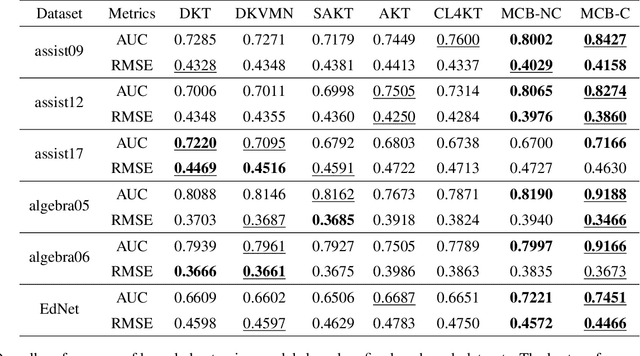
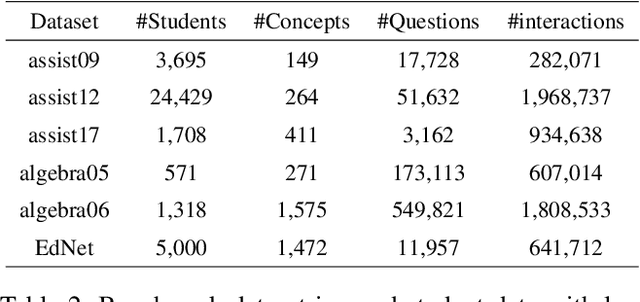
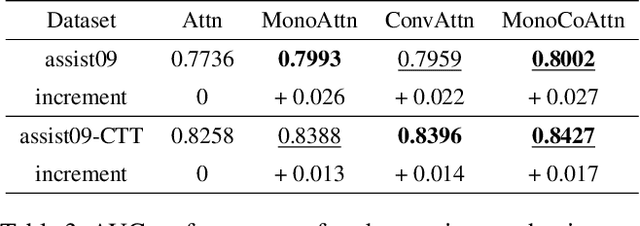
Abstract:Knowledge tracing (KT) is a field of study that predicts the future performance of students based on prior performance datasets collected from educational applications such as intelligent tutoring systems, learning management systems, and online courses. Some previous studies on KT have concentrated only on the interpretability of the model, whereas others have focused on enhancing the performance. Models that consider both interpretability and the performance improvement have been insufficient. Moreover, models that focus on performance improvements have not shown an overwhelming performance compared with existing models. In this study, we propose MonaCoBERT, which achieves the best performance on most benchmark datasets and has significant interpretability. MonaCoBERT uses a BERT-based architecture with monotonic convolutional multihead attention, which reflects forgetting behavior of the students and increases the representation power of the model. We can also increase the performance and interpretability using a classical test-theory-based (CTT-based) embedding strategy that considers the difficulty of the question. To determine why MonaCoBERT achieved the best performance and interpret the results quantitatively, we conducted ablation studies and additional analyses using Grad-CAM, UMAP, and various visualization techniques. The analysis results demonstrate that both attention components complement one another and that CTT-based embedding represents information on both global and local difficulties. We also demonstrate that our model represents the relationship between concepts.
Artificial Association Neural Networks
Nov 22, 2021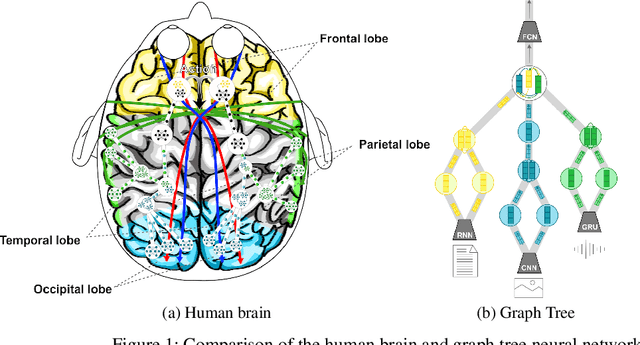
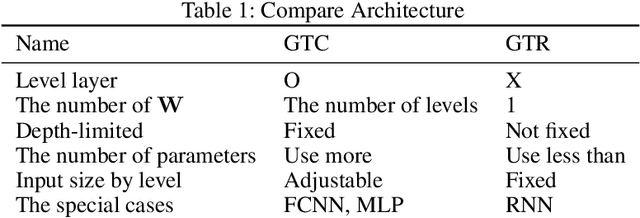
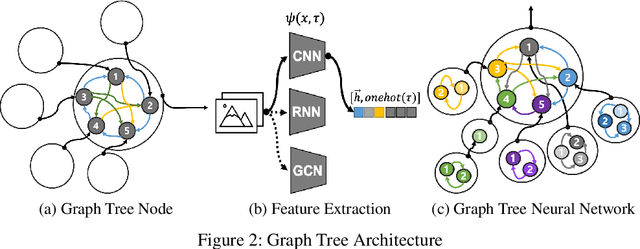
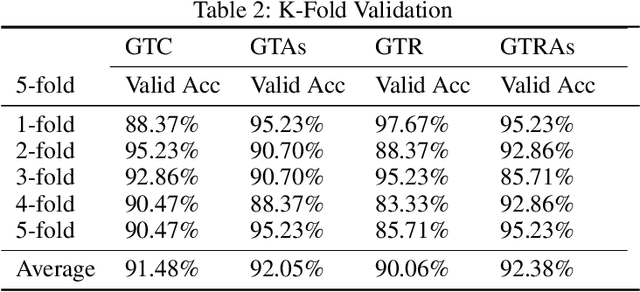
Abstract:In the field of deep learning, various architectures have been developed. However, most studies are limited to specific tasks or datasets due to their fixed layer structure. This paper does not express the structure delivering information as a network model but as a data structure called an association tree(AT). And we propose two artificial association networks(AANs) designed to solve the problems of existing networks by analyzing the structure of human neural networks. Defining the starting and ending points of the path in a single graph is difficult, and a tree cannot express the relationship among sibling nodes. On the contrary, an AT can express leaf and root nodes as the starting and ending points of the path and the relationship among sibling nodes. Instead of using fixed sequence layers, we create an AT for each data and train AANs according to the tree's structure. AANs are data-driven learning in which the number of convolutions varies according to the depth of the tree. Moreover, AANs can simultaneously learn various types of datasets through the recursive learning. Depth-first convolution (DFC) encodes the interaction result from leaf nodes to the root node in a bottom-up approach, and depth-first deconvolution (DFD) decodes the interaction result from the root node to the leaf nodes in a top-down approach. We conducted three experiments. The first experiment verified whether it could be processed by combining AANs and feature extraction networks. In the second, we compared the performance of networks that separately learned image, sound, and tree, graph structure datasets with the performance simultaneously learned by connecting these networks. In the third, we verified whether the output of AANs can embed all data in the AT. As a result, AATs learned without significant performance degradation.
Associational Memory Networks
Nov 19, 2021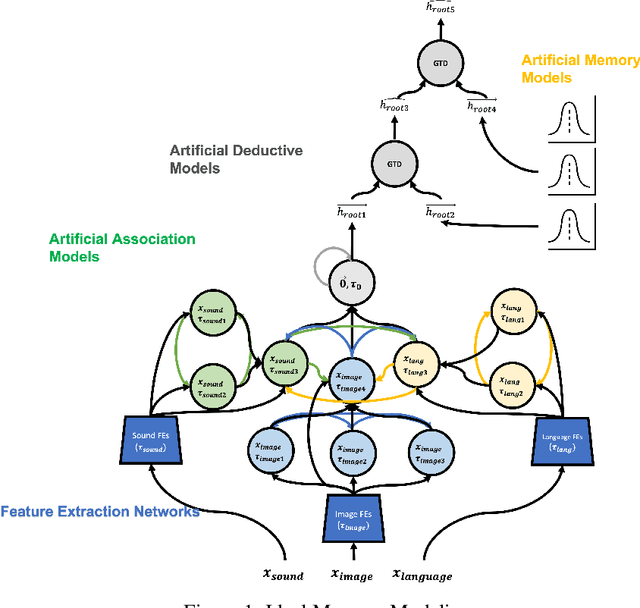
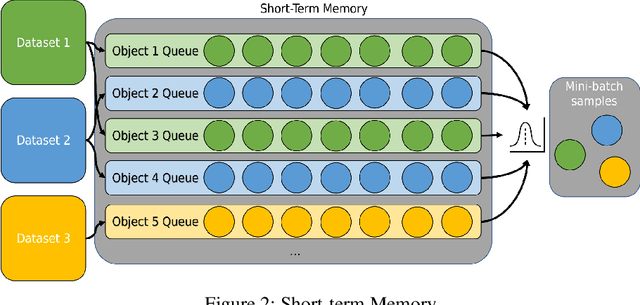
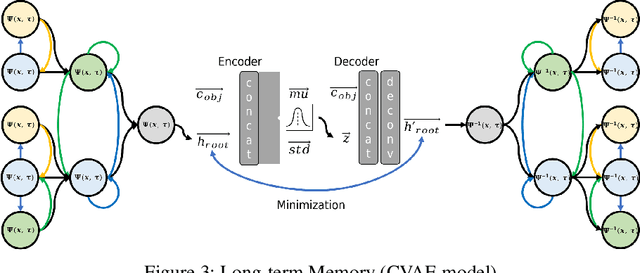
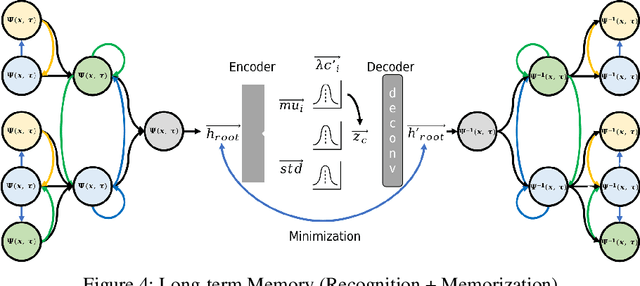
Abstract:We introduce associational memory networks(AMNs) that memorize and remember any data. This neural network has two memories. One consists of a queue-structured short-term memory to solve the class imbalance problem and long-term memory to store the distribution of objects, introducing the contents of storing and generating various datasets.
Imagine Networks
Nov 17, 2021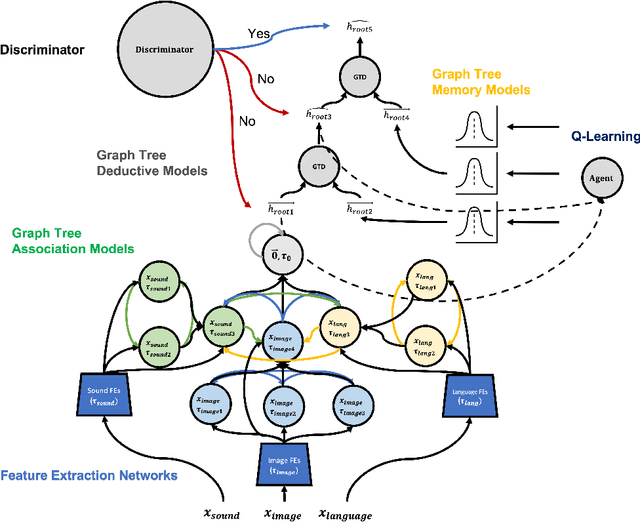
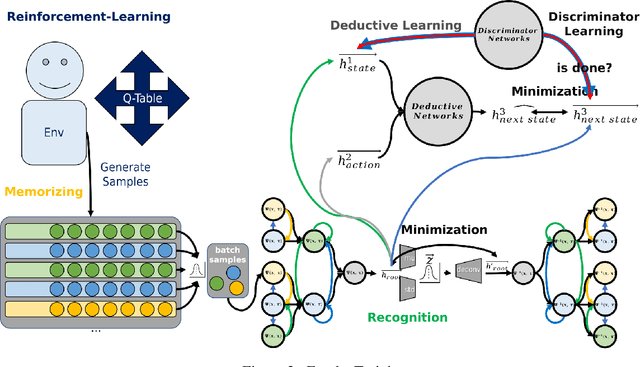

Abstract:In this paper, we introduce an imagine network that can simulate itself through artificial association networks. Association, deduction, and memory networks are learned, and a network is created by combining the discriminator and reinforcement learning models. This model can learn various datasets or data samples generated in environments and generate new data samples.
 Add to Chrome
Add to Chrome Add to Firefox
Add to Firefox Add to Edge
Add to Edge